|
There are a number of pet owners who have
hedgehogs, gerbils, guinea pigs, hamsters, rabbits, frogs, toads,
iguanas, bearded dragons, birds and even snakes.
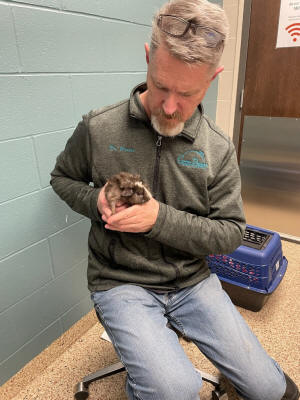
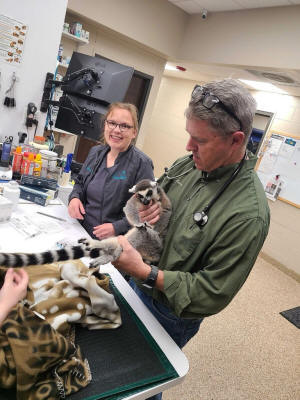
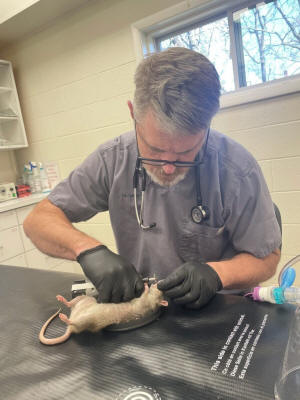
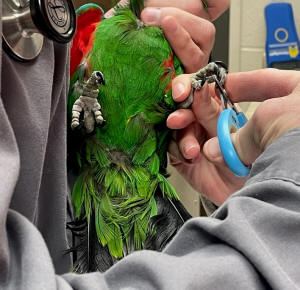
Dr. George Eales, a veterinarian at Green Prairie
Animal Hospital in Lincoln who does most of their exotic pet care,
says rabbits tend to be the most popular non-traditional pet.
While non-traditional animals can make great pets, it is important
to understand the differences and needs of non-traditional, exotic
pets.
In “The Growing Trend of Exotic Pet Ownership,” Brittany Cotton
says, “differences between a non-exotic pet and an exotic pet come
down to their level of domestication.” For example, cats and dogs
have long been domesticated and raised by humans, who have “bred
non-exotic, or domestic animals to display certain traits and
abilities since man started cohabitating with them.” We often know
what to expect from domesticated animals.
The traits and abilities of an exotic pet are a bit different.
Cotton describes an exotic animal as being part “of a species that
resisted domestication, didn’t possess abilities that made them
useful, or originated from a different country.”

To Cotton, though an exotic animal can be described
in various ways, “the core concept is one of it being an animal that
adapts to domestic life while retaining its wild or feral nature to
a degree.”
The needs of exotic pets are another important consideration. The
“Comprehensive Guide to Caring for Exotic Pets” says, “Understanding
your exotic pet’s unique needs is crucial to ensuring they enjoy a
long and healthy life. The best way to learn about their care is
through partnering with a veterinarian who has exotic pet
board-certification or simply has a special interest in your pet’s
species.”
Something especially important to consider before getting an exotic
pet is the environment they need to be in. Though various exotic
pets have different environmental requirements, there are some
general guidelines.
For example, when it comes to pets like bearded dragons and iguanas,
Dr. Eales said it is important to consider the husbandry [animal
raising] requirements for these pets as they require special
lighting, humidity and temperature regulation.
Location and safety are additional important environmental
considerations for exotic pets. With smaller exotic pets, you need
to keep the pet’s cage or enclosure away from large pets. For
example, rabbit cages should be kept away from cats or dogs, who are
their predators.

In addition, make sure any hazards such as plants are
not within the pet’s reach.
Additionally, make sure the enclosure allows the pet to access
resources like food and water.
Climate control can be important for certain
species as the guide to caring for these pets says. With reptiles
and amphibians, the comprehensive guide says is helpful to “consult
with an expert, such as your veterinarian or a breeder, to ensure
your pet’s enclosure meets their climate requirements for ambient
temperature, humidity, and sunlight or ultraviolet (UV) light.” A
thermometer inside their enclosure can help ensure the temperature
meets their needs. Dr. Eales said reptiles and amphibians need the
most controlled environments.
[to top of second column] |

Hygiene is important. Whatever environment the pet
lives in should be kept clean to help protect them from sickness.
Always make sure to wash your hands after caring for them.
When it comes to diet, exotic pets have different requirements
depending on whether they are omnivorous, herbivorous or
carnivorous. As with humans, excessive amounts of food can cause
weight gain or other dietary issues.
Dietary needs often depend on an exotic pets’ species. For example,
birds usually eat pellets, vegetables and fresh fruit in addition to
seeds and nuts.
Rabbits and guinea pigs need to eat hay, fresh vegetables and
pellets. In the article “Food and Diet,” Paige K Parsons says, “hay
should comprise 85% of an adult rabbit’s diet” because it is
“essential to a rabbit’s good health, providing roughage, which
reduces the danger of hairballs and other blockages and helps grind
down their constantly growing teeth to prevent overgrowth.”

Reptile’s dietary needs depend on their species. For
example, “Reptile Diet Plans: Tips for Balanced Nutrition and
Health,” Mutasim Sweileh says, “carnivores, like some lizards and
snakes, thrive on protein-packed foods like crickets or mice.”
Additionally, Sweileh says, “herbivores, such as tortoises, need
leafy greens and fibrous veggies [and] omnivores enjoy both; think
insects and fruits for a balanced mix.”
An amphibian diet consists mostly of worms and live insects like
crickets. However, to prevent disease, you need to supplement their
diet to provide them with vitamins and minerals.
A guide on what frogs eat says you can supplement their diets in
“one of two ways.” One way to supplement the diet is “by gut-loading
live insects with nutrients before offering them as nourishment –
ensuring these predators get all the protein and minerals they need
without extra fillers.” The other way is dusting which requires
“coating feeder insects with nutritional supplements before feeding
them to your frog.” To dust insects, “place insects in a container
with a small amount of supplement powder and give it a quick shake
to coat.”
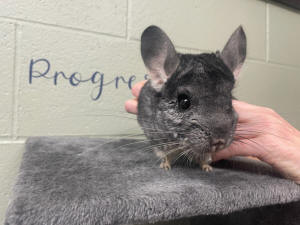
Like any pets, exotic pets need socialization. It is
important to understand the natural behavior of these animals when
figuring out their socialization needs. Some enjoy interacting with
humans, while others prefer little contact with humans. Some pets do
better and feel safer in pairs or groups.
Providing enrichment activities is another way to help with
socializing a pet.
The article “Exotic Pet Care: A Comprehensive Guide for Unique Pets”
offers ideas for activities to stimulate different species. With
birds, try to “offer a variety of toys, perches, and foraging
activities.” For reptiles, “create hiding spots, climbing
structures, and interactive feeding methods.” For small mammals like
gerbils and guinea pigs, “use tunnels, wheels, and puzzle feeders.”
As the Comprehensive Guide to caring for exotic pets says, “Caring
for an exotic pet is a unique, fun, and rewarding experience—but
inadequate preparation and planning can result in heartbreaking
consequences.” Before getting an exotic pet, do your research and
follow guidelines for care so your pet has a healthy and happy life
with you.
[Angela Reiners]
Resources:
Animal Pickings. “Amphibian Diets: What do they Eat?” Animal
Pickings, 2025.
https://animalpickings.com/amphibian-diets/
“Comprehensive Guide to Caring For Exotic Pets.” Happy Healthy Pets.
https://www.happyhealthypets.com/pet-resources/comprehensive-guide-to-caring-for-exotic-pets
Cotton, Brittany. “The Growing Trend of Exotic Pet Ownership. Polite
on Society, 23 August 2024.
https://politeonsociety.com/2024/08/23/the-growing-trend-of-exotic-pet-ownership/
Parsons, Paige K. “Food and Diet.” Rabbit.org Foundation,
https://rabbit.org/care/food-diet/
Pet Genius. “Exotic Pet Care: A Comprehensive Guide for Unique
Pets.” Pet Genius, 11 July 2024.
https://blog.petgenius.ai/2024/07/exotic-pet-care-comprehensive-guide-for.html
Sweileh, Mutasim. “Reptile Diet Plans: Tips for Balanced Nutrition
and Health.” Snake Snuggles, 14 Jan. 2025.
https://snakesnuggles.com/reptile-diet-plans/#google_vignette
|